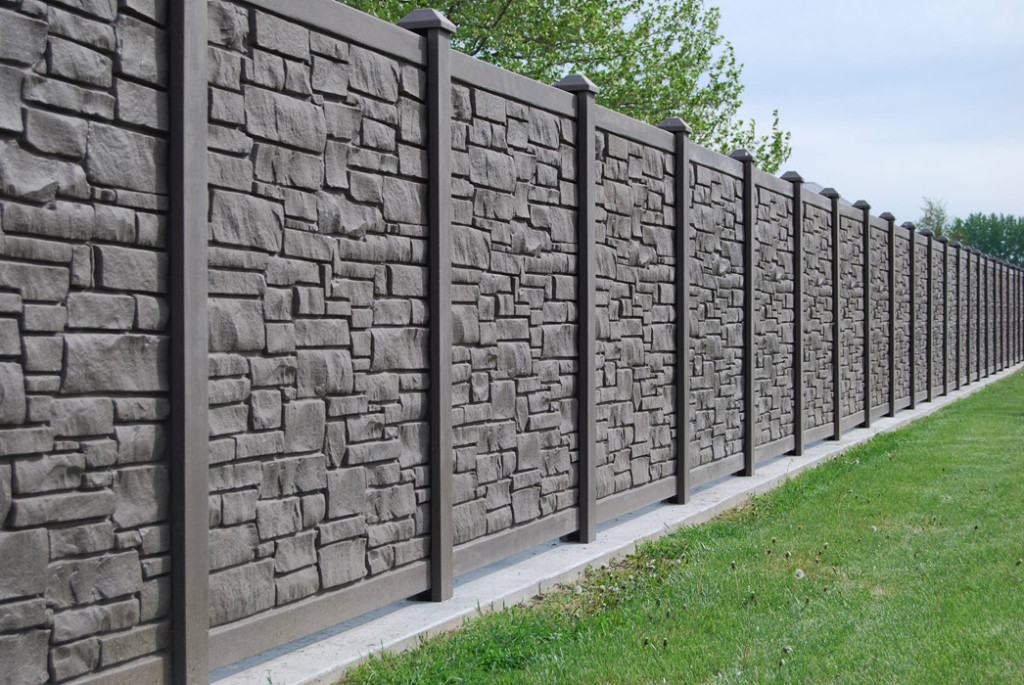Decorative Privacy Fence Options: Texas Fence
Let’s consider whether our outdoor spaces truly need to sacrifice beauty for privacy. When we’re thinking about fencing solutions, we often assume we must choose between attractive design and effective screening, but that’s no longer the case. Today a decorative privacy fence offers an impressive range of materials, styles, and innovative features that can transform an ordinary boundary into a stunning landscape element. From contemporary vinyl patterns to mixed-material masterpieces, we’ll explore how these modern options can help you create the perfect balance of seclusion and style.

Key Points
- Vinyl fencing offers decades of durability with minimal maintenance while providing sleek, modern privacy solutions for your property.
- Natural wood privacy fences feature customizable patterns and stain colors, with treated pine offering excellent weather and pest resistance.
- Vertical and horizontal slat configurations allow homeowners to adjust privacy levels while maintaining contemporary aesthetic appeal.
- Decorative privacy fence panels come in various styles, including Moroccan-inspired screens and woven designs that blend function with artistic elements.
- Mixed-material combinations like aluminum-wood hybrids provide modern appeal while incorporating integrated lighting and climbing plant options.
Modern Vinyl Privacy Solutions
Today’s vinyl privacy fences offer three distinct advantages over traditional materials: durability that lasts decades, virtually zero maintenance requirements, and modern style options that complement contemporary home designs. We’re seeing more homeowners choose vinyl privacy solutions because they won’t rot, warp, or fade like wood, and they don’t rust like metal alternatives.
Let’s explore the style options we can choose from. Modern vinyl privacy fences come in sleek panel designs with clean lines, sophisticated lattice-top variations, and two-tone combinations that create visual interest. We’ll find textured surfaces that mimic wood grain, smooth contemporary finishes, and stylish post caps that add architectural flair.
When we’re selecting a vinyl privacy fence, we can customize the height from 4 to 8 feet, choose from various colors like white, tan, or gray, and pick from different panel configurations. Many manufacturers now offer mix-and-match components, allowing us to create unique designs that reflect our personal style while maintaining privacy.
The best part? We won’t need to paint, stain, or seal these fences – just an occasional rinse with a garden hose keeps them looking fresh. Vinyl fences are also environmentally friendly, reducing deforestation and energy consumption, which adds to their appeal for eco-conscious homeowners looking for a decorative privacy fence.
Natural Wood Design Elements
Let’s explore how rustic cedar panel patterns can transform an ordinary fence into a stunning backyard feature.
We’ll see how alternating wide and narrow cedar boards creates visual interest while maintaining privacy, with the natural wood grain adding warmth and character.
When we combine different wood stain colors on adjacent panels, we can achieve striking effects that complement our outdoor living spaces while preserving the authentic beauty of natural cedar.
Adding a lattice top panel to your cedar fence not only enhances its decorative appeal but also provides additional privacy while maintaining the natural charm of the wood.
Rustic Cedar Panel Patterns
Rustic cedar panel fencing offers numerous design possibilities that blend natural wood beauty with privacy. We can choose from patterns like vertical slats with varying widths, diagonal lattice overlays, or alternating board heights to create visual interest while maintaining a natural aesthetic. These cedar panels weather beautifully over time, developing a distinguished silver-gray patina that enhances their rustic charm.
Let’s explore some popular cedar panel configurations.
The traditional board-on-board design provides complete privacy and classic appeal, while shadowbox patterns create depth through offset boards on alternating sides. We’re seeing more homeowners opt for horizontal panels with tight spacing, which offers a modern take on rustic design while ensuring maximum screening from neighbors.
For added character, we can incorporate decorative tops like French Gothic points, concave scallops, or lattice caps. These elements work particularly well with cedar’s natural grain patterns and rich coloring. When we select cedar panels, we’re not just choosing a fence – we’re investing in a living design element that will continue to develop character throughout its lifetime.
Mixed Stain Color Combinations
While natural wood brings inherent beauty to any fence design, mixing different stain colors can dramatically enhance its visual appeal. We’ve found that combining two to three complementary stain shades creates depth and visual interest that single-color fences can’t match. Let’s explore some winning combinations that’ll make your fence stand out.
We recommend pairing dark walnut with honey oak for a classic contrast that highlights wood grain patterns. For a more contemporary look, we’re seeing great results with weathered gray and white wash combinations, which create a coastal-inspired aesthetic. If you’re feeling bold, try alternating cedar red with natural pine – it’s become one of our most requested combinations.
When we’re planning mixed stain patterns, we’ll often use darker tones for posts and rails, while lighter shades work beautifully on panels. You can also create striking horizontal or vertical stripes by alternating stain colors on individual boards. We’ve discovered that sealing each differently stained section separately helps maintain crisp color boundaries and guarantees long-lasting results. Remember to test your chosen combination on spare boards first – it’s the best way to make sure you’ll love the final look.
Metal and Mixed Material Combinations
Let’s explore how sleek metal panels and artistic mixed materials can transform traditional privacy fences into stunning modern showcases.
We’re seeing contemporary steel designs paired with creative metal artwork that adds visual interest through cutouts, lattice patterns, and dimensional elements.
For those wanting the best of both worlds, aluminum-wood hybrid solutions offer durability and warmth by combining powder-coated metal frames with natural wood inserts.
When selecting contractors for the installation of these modern fence styles, it’s essential to compare quotes to ensure you receive the best value for quality craftsmanship.
Modern Steel Panel Design
In recent years, modern steel panel designs have revolutionized privacy fencing by combining sleek metal elements with complementary materials like wood, glass, or stone. We’re seeing homeowners embrace laser-cut steel panels featuring geometric patterns, abstract designs, and custom motifs that create stunning visual interest while maintaining privacy.
Let’s explore some popular steel panel options. Horizontal steel slats with varying widths create a contemporary look that’s both sophisticated and functional. We can incorporate weathered steel (Cor-ten) panels that develop a rich, rust-colored patina over time, adding warmth to modern landscapes. For a dramatic effect, we’re finding that perforated steel panels with integrated lighting transform ordinary fences into nighttime art installations.
We’ve noticed that powder-coated steel panels in matte black, charcoal, or metallic finishes are trending among design-conscious homeowners. These panels often feature modular components that we can customize to fit any space.
When we integrate steel panels with frosted glass inserts or natural wood sections, we create depth and texture while softening the industrial feel. The best part? These steel designs require minimal maintenance and can last decades with proper installation.
Mixed Metal Fence Art
Artists and designers have transformed privacy fencing into stunning mixed-metal installations that blur the line between function and art. We’re seeing creative combinations of copper, brass, steel, and aluminum that create depth and visual interest while maintaining security. These mixed-metal fences often incorporate perforated panels, wire mesh inserts, and metallic overlays that catch light and cast intricate shadows throughout the day.
We can customize these artistic barriers by combining weathered copper with polished steel, or incorporating brass accents into aluminum frameworks. Many homeowners are choosing designs that feature metal artwork welded directly onto sturdy fence panels, creating one-of-a-kind statements. Popular options include abstract geometric patterns, nature-inspired motifs, and architectural elements that complement your home’s style.
Let’s not forget the practical aspects – these mixed-metal fences are surprisingly durable. By using corrosion-resistant alloys and protective coatings, we’re able to [GUARANTEE] these artistic installations maintain their beauty for years.
The natural patina that develops on certain metals adds character while protecting the underlying structure, making these fences both visually dynamic and long-lasting investment pieces.
Aluminum-Wood Hybrid Solutions
Through innovative design breakthroughs, aluminum-wood hybrid fencing has emerged as a premier choice for homeowners seeking modern aesthetics with traditional warmth. We’re seeing more neighbors combine sleek aluminum frames with rich wood inserts to create striking privacy barriers that offer the best of both materials. These hybrids deliver exceptional durability while preserving the natural appeal we’ve always loved about wooden fences.
Let’s explore how these combinations work in practice. We can mount cedar or ipe planks horizontally within powder-coated aluminum posts, creating clean lines that complement contemporary architecture. For added visual interest, we might alternate wood panels with aluminum sections or incorporate decorative aluminum lattice above solid wood panels.
The aluminum components protect against structural issues while the wood elements add warmth and character.
We’ll find these hybrids particularly valuable in challenging climates, where traditional all-wood fencing might warp or rot. The aluminum framework guarantees stability, while specialized mounting systems allow the wood panels to expand and contract naturally with temperature changes. When we’re looking for low-maintenance options, these hybrids also let’s replace individual wood sections without dismantling the entire structure.
Vertical Slat Configurations
Vertical slat fencing offers versatility through different spacing arrangements and mounting patterns. We can customize the gap width between slats to achieve our desired level of privacy while maintaining airflow and visual interest. Standard configurations typically feature evenly spaced slats, but we’re not limited to just one approach.
Let’s explore some popular vertical slat arrangements that’ll enhance our outdoor spaces.
The zero-gap setup provides maximum privacy, with slats positioned edge-to-edge. For a semi-private effect, we can space slats 1-2 inches apart, creating subtle glimpses through the fence while maintaining a strong visual barrier. The alternating depth pattern, where we mount slats at different distances from the frame, adds compelling shadows and dimension. Additionally, incorporating elements like lattice panels enhances seclusion and adds artistic appeal to the fence design.
We’ll find that vertical slats work particularly well with modern architectural styles. They’re available in various widths, from narrow 2-inch strips to bold 6-inch boards. When selecting our configuration, we should consider factors like sun angle, prevailing winds, and neighboring sightlines. By combining different slat widths or incorporating mixed materials like glass or metal accents, we can create truly distinctive boundaries that reflect our personal style.
Horizontal Pattern Innovations
Modern design has revolutionized horizontal fence patterns, giving us exciting new ways to define our outdoor spaces. We’re seeing a surge in mixed-width boards that create dynamic visual rhythms, while alternating depths add compelling shadow play throughout the day. By incorporating these dimensional variations, we can transform an ordinary fence into an artistic statement that enhances our property’s character.
Let’s explore some of the latest innovations we’re loving in horizontal fencing.
We can now combine materials like cedar and metal for striking contrast, or integrate LED lighting between boards for subtle evening ambiance. Some of us are embracing the trend of floating horizontal panels, where boards appear to hover with minimal visible support structure. We’re also seeing success with asymmetrical spacing patterns that maintain privacy while adding architectural interest.
For those of us wanting something truly distinctive, there’s the option of incorporating built-in planters between horizontal slats or using varied board textures to create alluring patterns. Weather-resistant composite materials allow us to experiment with two-tone designs that wouldn’t be possible with traditional wood, opening up endless possibilities for personalization. Horizontal fences are also favored for their low maintenance needs, particularly when using durable materials like cedar, which naturally resists moisture and insects.
Eco-Friendly Privacy Barriers
Sustainability in outdoor privacy has sparked a revolution in eco-conscious barrier options. We’re seeing more homeowners embrace recycled materials and living walls that not only protect our privacy but also nurture our environment. Let’s explore some sustainable choices that’ll transform your outdoor space while reducing your carbon footprint.
| Material | Environmental Impact | Lifespan |
|---|---|---|
| Bamboo | Fast-growing renewable | 15-20 years |
| Living Wall | Carbon-reducing, habitat-creating | Permanent with care |
| Recycled Composite | Waste-reducing, recyclable | 25-30 years |
We’ve found that bamboo fencing offers quick growth and natural beauty, while requiring minimal processing compared to traditional wood. Living walls, created with climbing vines or vertical gardens, provide dynamic privacy that changes with the seasons and supports local wildlife. For those seeking low-maintenance options, recycled composite materials combine durability with eco-responsibility. These materials often incorporate reclaimed plastic and wood fibers that would otherwise end up in landfills. By choosing these sustainable alternatives, we’re not just creating privacy – we’re joining a community of environmentally conscious homeowners who value both aesthetics and earth-friendly solutions. Additionally, incorporating planter boxes with colorful flowers can transform the fence, adding elegance while contributing to sustainability.
Decorative Panel Styles
Creative panel designs have revolutionized the way we approach privacy fencing, offering homeowners an array of stylish options beyond traditional pickets and slats. We’re seeing stunning geometric patterns, laser-cut designs, and artistic lattice work that transform ordinary barriers into eye-catching focal points for our outdoor spaces.
Let’s explore some of today’s most popular panel styles. Moroccan-inspired screens feature intricate arabesque patterns that cast beautiful shadows while maintaining privacy. Modern horizontal slat panels with varying widths create a contemporary aesthetic that’s perfect for urban homes.
We’ll also find woven panels that combine different materials like wood and metal, adding texture and visual interest to our yards.
For those of us who love Asian-inspired design, bamboo-look panels and Japanese shoji-style screens offer tranquil elegance. Wave and curve patterns provide a softer alternative to straight lines, while abstract designs let’s express our artistic side.
Metal panels with custom cutouts allow us to personalize our space with unique motifs, and we can even incorporate climbing plant supports into decorative panels for a living privacy solution that changes with the seasons.
When considering materials for these panels, treated pine wood fences provide an excellent option due to their strength, durability, and resistance to environmental factors such as rot and insect damage.
Landscape Integration Techniques
How do we smoothly blend our decorative privacy fence with the surrounding landscape? Let’s explore proven techniques that create harmony between our fencing and outdoor spaces.
We’ll want to incorporate climbing plants like jasmine or ivy to soften harsh lines, while strategically placed flower beds along the fence base create natural shifts.
We can maximize integration by matching our fence color to existing landscape elements or home exterior. Consider installing planter boxes directly onto the fence panels – they’ll add depth and create living walls of seasonal blooms.
Border gardens work wonders too, especially when we layer different heights of shrubs and perennials to gradually guide the eye from ground to fence top.
Don’t forget about lighting – well-placed landscape lights can highlight both fence features and plantings while creating evening ambiance. We might also consider breaking up long fence runs with carefully positioned trees or large ornamental grasses.
For the best results, let’s plan our plantings in groups of odd numbers and maintain consistent spacing. Remember to leave enough room between the fence and larger plants to allow for proper growth and maintenance access.
Additionally, investing in professional fence installation enhances the integration of your fence with the landscape, as certified installers provide quality materials and craftsmanship that ensure durability and longevity.
Frequently Asked Questions
How Long Does It Typically Take to Install a Decorative Privacy Fence?
We’ll usually need 2-3 days to install your privacy fence, though it can take up to a week depending on length, terrain, material choices, and whether we’re removing old fencing.
What Permits Are Required Before Installing a Privacy Fence?
Did you know 85% of cities require fence permits? We’ll need to check with our local building department for zoning permits, HOA approval, and utility clearance before starting our fence project.
Can Privacy Fences Be Installed on Sloped or Uneven Terrain?
Yes, we’ll help you tackle sloped terrain with stepped panels or racked fencing that follows the grade. We can adjust post heights and spacing to accommodate any uneven landscape.
How Far Apart Should Fence Posts Be Placed for Optimal Stability?
We’ve found that fence posts work best when spaced 6-8 feet apart. For areas with high winds or when using heavier materials, let’s keep them closer to 6 feet for extra strength.
What Is the Average Cost per Linear Foot for Decorative Privacy Fencing?
We typically see decorative privacy fencing costs range from $30 to $60 per linear foot, including materials and installation. Let’s remember these prices can vary based on your style choices and location.
Takeaway
While sleek vinyl fencing offers modern appeal with minimal upkeep, we’ve found that natural wood’s timeless charm often steals the spotlight in outdoor spaces. We’re excited to see homeowners mixing traditional privacy solutions with contemporary design elements, from vertical bamboo installations to hybrid metal-wood combinations. Whether you’re drawn to eco-friendly barriers or classic decorative panels, we’re confident these innovative options will transform your landscape while maintaining your cherished privacy.








